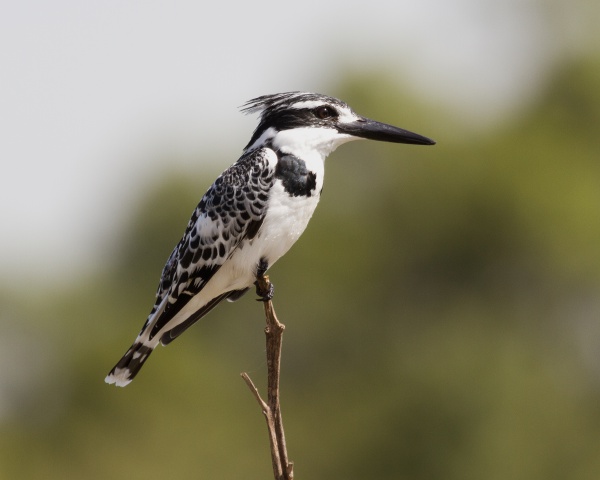Facts About Pied kingfisher
The pied kingfisher is a striking bird found across Africa and Asia, easily recognizable by its black and white plumage and unique fishing techniques. First described by Carl Linnaeus in 1758, this bird comprises five subspecies, each with its own variation on the classic pied kingfisher appearance. The males are distinguished by a double breast band, while the females exhibit a single, broken gorget. You’ll often spot them in pairs or small groups, perched with their heads bobbing and tails flicking.
Interestingly, the pied kingfisher stands alone in the genus Ceryle. It is believed to have diverged early from the American kingfisher lineage, with origins likely in the Old World. However, its evolutionary path remains a subject of debate among scientists.
These medium-sized birds, about 25 cm long, have striking black and white plumage that varies slightly among the different subspecies. They are widespread across sub-Saharan Africa and southern Asia. While primarily resident birds, they can exhibit some limited migratory behavior. Renowned for their noisy calls, pied kingfishers are common and quite abundant in their habitats.
When it comes to diet, these birds primarily feed on fish but also consume crustaceans and aquatic insects. They hunt by hovering over the water before diving to snatch their prey, demonstrating impressive speed and agility in flight. The breeding season occurs between February and April, with nests typically situated in mud banks above water. Interestingly, pied kingfishers often engage in cooperative breeding, where family members assist in raising the young. However, the nestlings can face threats such as maggot infestations.

 Zimbabwe
Zimbabwe